My latest guitar acquisition is a 1983 Washburn Hawk, part of their 'Wing' series of guitars (Eagle, Falcon, Hawk and Raven) introduced in 1979. This belonged to my Brother-In-Law who had it for around 20 years, but he'd become too arthritic to play guitar, so he's selling off his collection. I'd always liked this, so I was allowed by the wife to buy it from him to help him out. I can remember the adverts for them appearing in International Musician and Recording World and liking the shape.
All the Wing series were generally the same shape and pickup configuration, but with different levels of adornments and finishing. The Raven was the bolt-on neck version, which didn't last very long. Made in the Japanese Matsumoku factory for Washburn.
In fact, none of the original configurations lasted long, probably to cut costs a bit, as by 1980 there were (unofficial numbering) Mk II versions of the guitars and by 1982 there were Mk III versions and the Raven had been dropped.
The Hawk originally started out with an arched-top 3-piece through-body neck and a big dished semi-circular cutaway on the back at the heel, but on the Mk III this has changed to a flat body with a 3-piece set-neck with no rear heel cutaway.
Heavily influenced by the Hamer Sunburst (itself a copy of the Gibson double-cut Les Paul Jr and Special shape) and the Yamaha SG2000 (in terms of construction), it differs in having symmetrical horns, which have been thinned down a bit from the offset DC horn look.
Neck join is at the 20th fret (of 22 frets), so you've got great upper fret access, but with a LP-thickness body, it definitely doesn't balance at the neck strap button and is quite body-heavy. Not an issue when on a strap.
I'm not sure what the 2-piece body wood is. The specs say ash, but if so it's a very fine grain ash, and not like the figured ash that the catalogue pictures show. I first thought it may be mahogany, but on closer look, the pattern doesn't look right for that. Finish is probably polyester. The way it's chipped over the years indicates polyester to me rather than polyurethane. Hard wearing, but it does tend to crack off in lumps if hit hard.
I think the neck construction is maple/mahogany/maple. Hard to tell exactly through the dark finish but the outer strips seem to have a birdseye look to them. Profile is quite a shallow C, very modern in feel.
The trussrod has a Gibson-style 'olive' nut for adjustment. This pic shows the original bone nut, but one of the slots was cut too low so I've since replaced it with another bone nut.
The scale length is a Gibson-like 24.75", but strangely the fretboard has a 9.5" radius.
The tuners are fine. They are either OEM Schallers or Schaller copies, but there is no play and the buttons are still all all adjustable for tightness. They still have the original protective plastic backing on the rears, but as they have writing on, I'm not removing them as I'd normally do.

The pickups have no makers name or model ID numbering units (they are called 'Power Sustain' by Washburn) but are supposed to be made by either Gotoh or DiMarzio.
The same pickups were fitted to all the Wing series guitars (so no step-up in specs as the price went up). With their coil split, they are pretty similar to DiMarzio Dual Sounds (which were 3-wire Super Distortions), with around an 11.3k DCR and ceramic pickups. Both pickups have the same DCR value (the neck value is in fact very slightly more than the bridge).
However their respective outputs balance quite well (with some height adjustment) and they have a fairly detailed and clean tone to them, as well as having a powerful signal that makes it fairly easy to drive the input of a clean valve amp into a bit of breakup. Some powerful pickups can be very mids driven, but I'd say these are pretty much balanced between the bass, mids and treble (all subjective feelings). Not quite as dynamic as a PAF-style pickup, but not bad.
The coil splits work well, and due to the high DCR value, don't sound weak in single coil mode. Very useable single and humbucking sounds. The only negative I've found is that with a high gain drive pedal, the neck pickup is a bit microphonic, so I may have to try and wax dip it.
The pickups are 3-screw mounting (why aren't all humbuckers 3-screw these days), which just makes them so easy to set up parallel to the strings, as well as being held far more rigidly than 2-screw humbuckers.
No name or maker indication at all on the rear of the pickup:
You can see that the cavity routing is very neat and tidy, indicative of the high quality of Japanese guitar construction at this time. Far neater than the guitars say Gibson were producing.
The string-through body bridge (another nod to the Hamer Sunburst) is looking a bit worn after 39 years use, but there are no rusted screws and everything works well. There are grub screws at the sides allowing you to lock the saddles in pace

I'm not sure if this does anything major to improve sustain (which is very good), but I do prefer saddles to be held firmly rather than loose, so is a nice bonus.
The pots are housed in a metal casing for shielding (not quite sure why they didn't shield the whole cavity) and the control cavity cover is anodised aluminium plate, rather than plastic (though not grounded, so they missed having some extra protection there).
And then surprisingly, if you take the metal pot cover off, you find that they've used a PCB for inter pot wiring. I'm not quite sure why, as it doesn't really cut down on the number of wiring connections required, but I presume it seems a good idea at the time and may have sped up production times slightly. All the pots work well, with no scratchy noises.
I must say that looking at the side of the cavity in that picture, the pattern looks a lot more-ash like than on the top and bottom.
It came with a non-original hard case, but it doesn't suit the guitar, (the neck supports are too high for it to sit flat) so I'll probably butcher the case interior so the neck is supported better and the back of the guitar can sit flat in teh case.
Cosmetically, there are better condition guitars of this age out there, but the chips are mainly on the back and headstock edges and there's nothing that affects the playability. This is a really nice, well-made guitar with some really nice features and good pickups. After the fret level it really does play like butter. I'm very pleased with it. A good purchase.





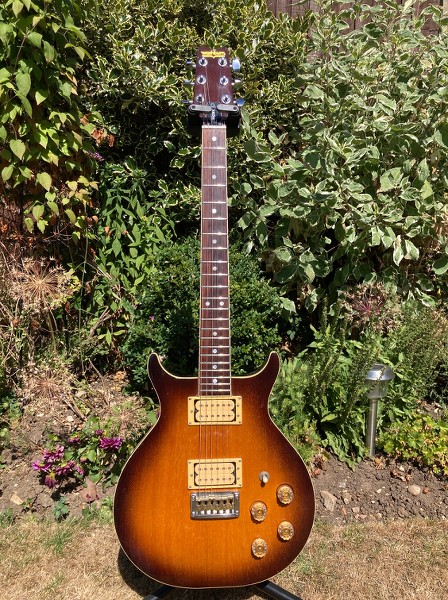
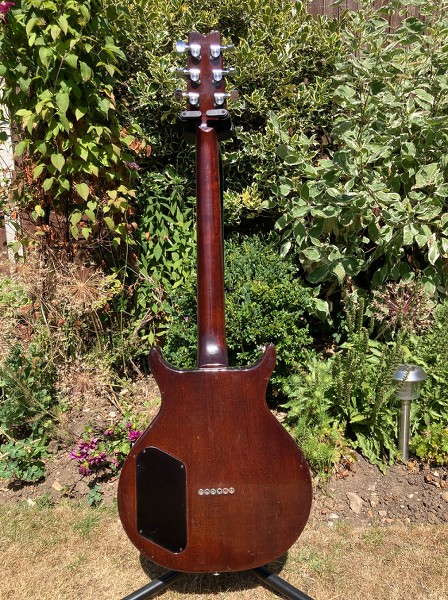
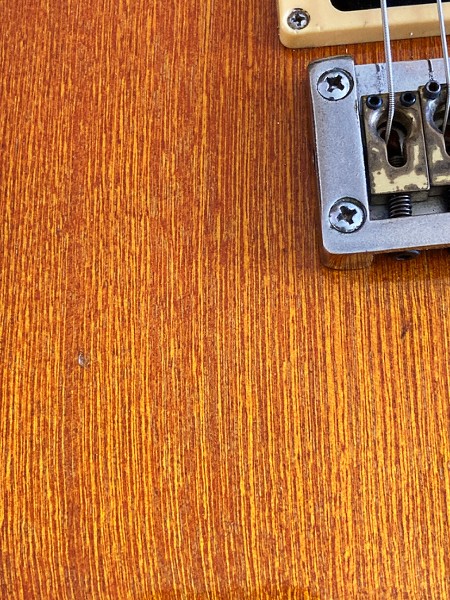
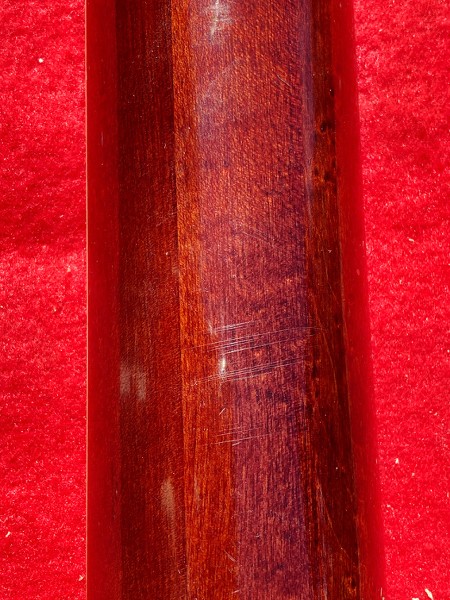
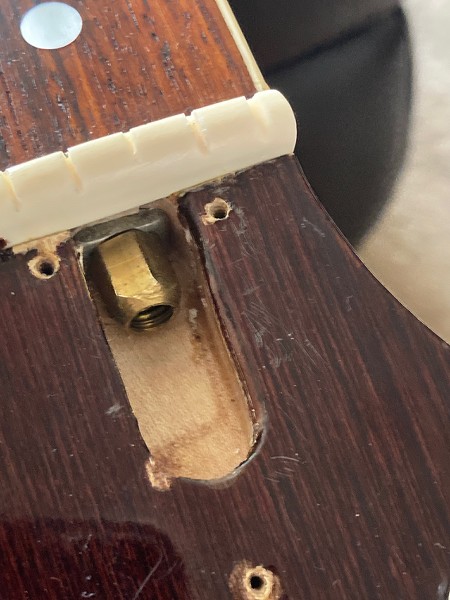

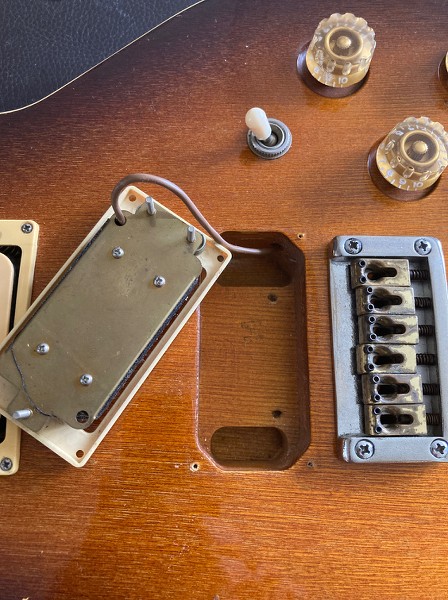
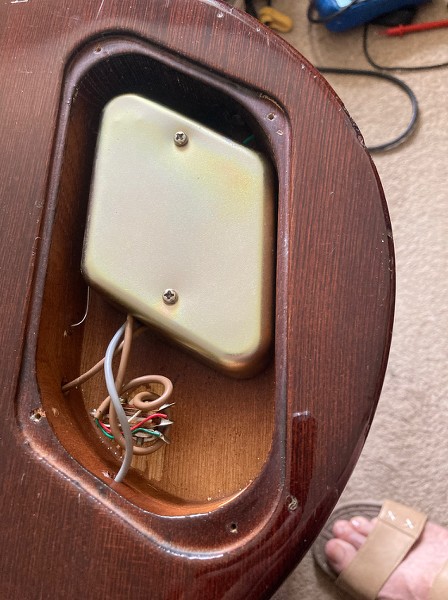
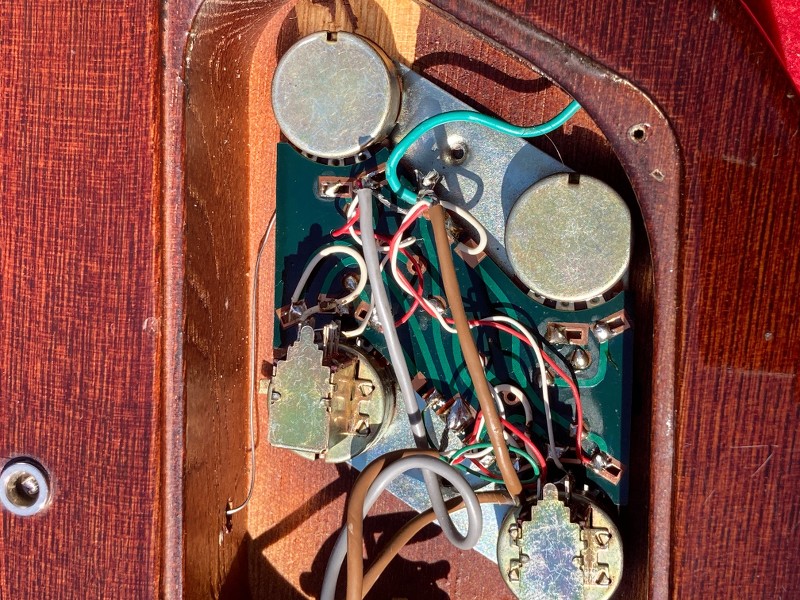

 Reply With Quote
Reply With Quote




